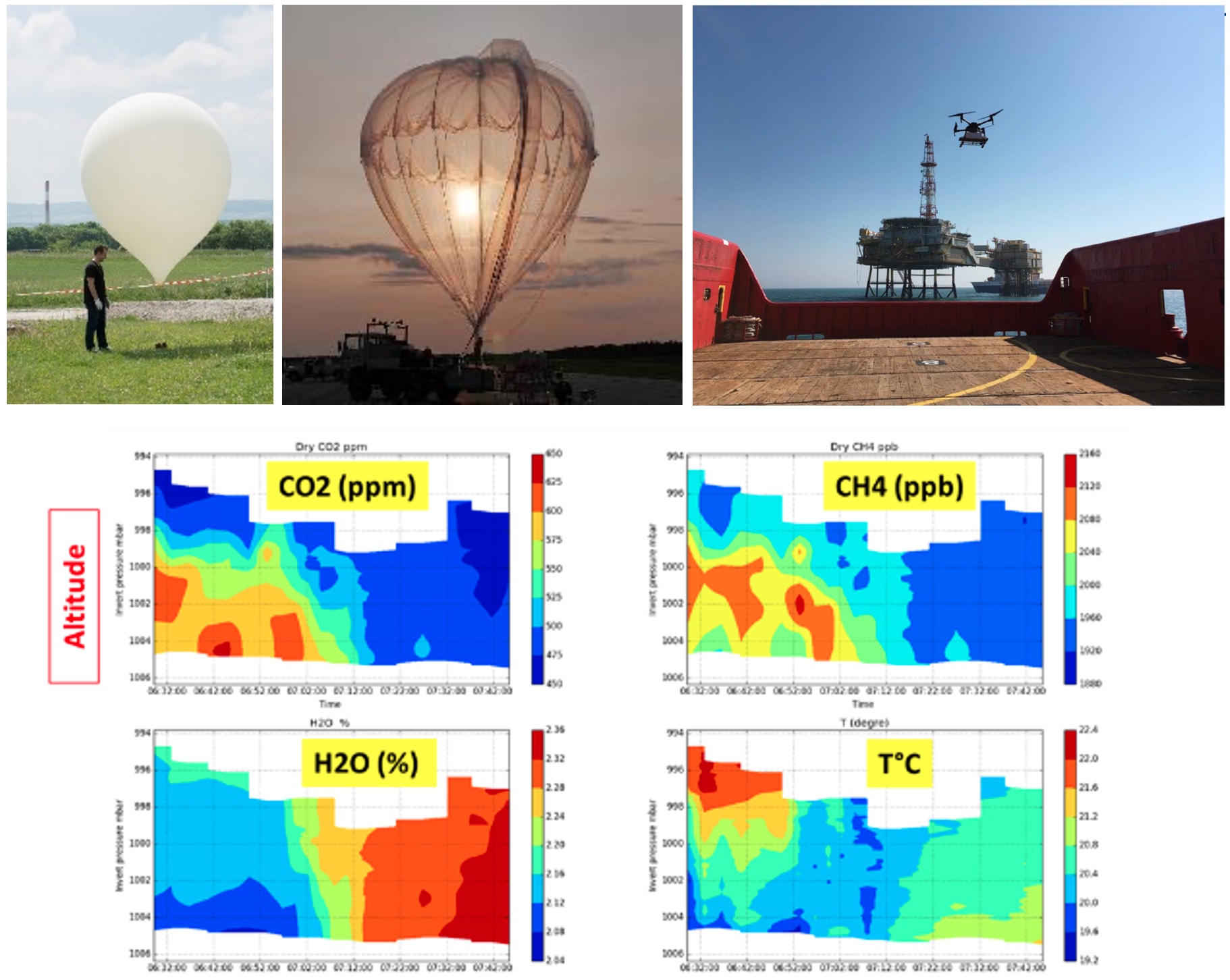AMULSE " Atmospheric Measurements by Ultra Light SpEtrometer " - Greenhouse gas measurements under tethered balloons, weather balloons and drones
We are all aware of the increase in greenhouse gas (GHG) emissions and their impact on the climate. The median assumptions of the Intergovernmental Panel on Climate Change (IPCC) predict a doubling of carbon dioxide (CO2) before the end of this century. But the concentration of other greenhouse gases with a radiative power greater than that of CO2increases, such as for example methane (CH4). According to the IPCC, reduction in greenhouse gas emissions must accelerate by 2030 to have any chance of achieving the goal of keeping the increase in global temperature below +1.5°C. To limit our impact, it is therefore crucial to properly quantify the sinks/sources of the different types of industrial and natural ecosystems. The monitoring and quantification of atmospheric emissions are key points in this reduction challenge.This is why the GSMA (Groupe de Spectrométrie Moléculaire et Atmosphérique - France) is working on the development of a laser diode spectrometer called AMULSE (Atmospheric Measurements by Ultra Light SpEtrometer) to help better quantify greenhouse gas emissions. Different versions of AMULSE exist to make measurements from the ground, weather balloon and drone. This presentation will present the instrument, the applications and the results but also the different perspectives in the framework of the joint laboratory and the industrial chair with TotalEnergies.
